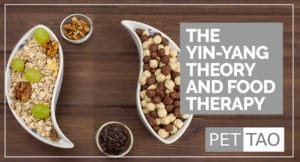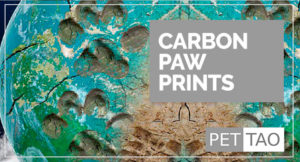Why all the interest in herbs over pharmaceuticals?
Several reasons exist. Herbal medicine:
- Provides gentle treatment of chronic conditions
- Exhibits few side effects
- Can be used instead of or in conjunction with Western treatments
- Enhances the effectiveness of some Western treatments.
But, herbs are more than simply a safe, gentle, and effective replacement for many pharmaceuticals.
Herbal medicine has a different composition than pharmaceutical medicine.
Medicinal plants contain a vast array of chemical compounds.
Each individual chemical compound has the ability to work separately or together with other compounds when affecting the body.
The varied compounds make herbs versatile therapeutic tools.
You are probably familiar with an excellent example: milk thistle.
“Milk thistle (Silybum marianum) has been used for 2,000 years as an herbal remedy for a variety of ailments, particularly liver, kidney, and gallbladder problems. Several scientific studies suggest that substances in milk thistle (especially a flavonoid called silymarin) protect the liver from toxins, including certain drugs such as acetaminophen (Tylenol), which can cause liver damage in high doses. Silymarin has antioxidant and anti-inflammatory properties, and it may help the liver repair itself by growing new cells.”
-University of Maryland Medical Center
Go ahead, read the above quote again.
Don’t you find interesting the fact that so many different body processes are affected by this single herb–milk thistle?
Actually, almost all individual herbs affect the body in several different ways.
Eastern & Western Herbal Medicine: Two Schools of Thought
Two predominant philosophies exist in the realm of herbal treatment: Eastern herbal medicine (Traditional Chinese Veterinary Medicine or TCVM) and Western herbal medicine.
Eastern Herbal Medicine
Eastern herbal medicine, also called Traditional Chinese Medicine (TCM), developed as part of Chinese culture dating back 5,000 years.
By 200 BC, TCM was an established practice.
Ancient practitioners published official TCM herbal formulations as early as 100 AD.
Traditional Chinese Veterinary Medicine (TCVM) originated from its human equivalent Traditional Chinese Medicine (TCM).
Western Herbal Medicine
Western herbal medicine’s history is equally impressive.
The use of herbs for the treatment of illness dates back to the ancient Greeks and Romans, to the indigenous peoples of the British Isles, and to Native Americans.
Eastern & Western Herbal Formulations Differ
Perhaps the most obvious difference between Eastern (TCVM) and Western herbal medicine is in the approach to the formulations.
Western Herbal Medicine Formulations
In Western herbal medicine, normally just one or two herbs are used in treatment.
Also, Western herbal treatments treat symptoms, similar to the way modern Western medicine works.
Western herbal medicine relies on a simplistic, single-herb approach.
For example, if a patient has diarrhea, then an herb that suppresses the symptoms of diarrhea is used.
However, experts believe at one time in history, Western herbal medicine included more complex combinations similar to those used in TCVM.
Unfortunately, the use of multi-herb formulations in Western herbal medicine has been discarded during the last few centuries.
Eastern Herbal Medicine Formulations
In Eastern Herbal Medicine (TCVM), tailored and unique combinations of herbs are used.
Sometimes as many as 50 or more herbs are used together for a synergistic solution to the disease and its underlying imbalance.
Every combination in Chinese herbal medicine is a complex formulation that usually consists of the following.
The King Herb
The “king” herb is also called the “monarch” herb or “main” herb.
The king herb focuses on the main symptoms and underlying causes and dominates the formula.
The Minister Herbs
The “minister” herbs strengthen the effects of the king herb.
Assistant Herbs
The assistant herbs treat less important symptoms.
Assistant herbs also reduce irritating properties or toxicity of the king herb.
Messenger Herbs
Messenger herbs coordinate the effects of the other herbs and deliver herbs to a particular site in the body.
Different Eastern & Western Herbal Categories
How single herbs are categorized is another major difference between Eastern and Western herbal medicine.
Eastern categories
In Eastern herbalism, herbs are categorized according to:
- Temperature
- Taste
- Direction
- Function
- Action
- Affected organ channels.
Western categories
In Western herbalism, herbs are categorized according to:
- Medicinal property
- Function
- Action.
In Eastern herbalism, more specific Chinese herb categories allow the TCVM practitioner to pinpoint treatment of symptoms as well as underlying imbalances.
Western herbalism arranges herb categories to allow for the treatment of physical symptoms.
The Biggest Difference Between Eastern & Western Herbal Medicine Philosophies
The most significant and distinguishing difference between Eastern herbal medicine and Western herbal medicine is:
Western herbal medicine focuses on alleviating symptoms of a disease or illness.
Eastern herbal medicine treats the body as a whole, treating the underlying cause of disease while alleviating symptoms.
The Western Herbal Medicine Approach
In Western society, people use herbs basically the same way they use pharmaceuticals.
Western herbal medicine focuses on treating the symptoms only, without attention to the underlying causes of disease or illness.
Instead of giving a pharmaceutical pill or injection to alleviate, Western herbalists recommend a herb.
Western herbalism has the benefit of fewer side effects than pharmaceuticals.
Western herbalism is also quite successful in treating chronic conditions naturally.
The Eastern Herbal (TCVM) Approach
The Eastern Herbal (TCVM) approach focuses on the body as a whole.
Eastern holistic approaches to disease often include several elements of Traditional Chinese Veterinary Medicine (TCVM).
Vets often combine food therapy, acupuncture, and tuina with herbal formulas to provide a “whole body” approach to healing.
In order to understand TCVM at its most basic level, understanding terminology is mandatory.
Below, we have listed Eastern herbal terms and definitions that will help you in understanding the Eastern Herbal Formulations, their functions, and their benefits.
Shen
Shen is the term for “spirit” or “mind.” In Eastern philosophy, Shen literally stands for our “presence”.
Qi
Qi is one of the body’s vital substances.
In short, Qi refers to “natural energy,” “life force,” or “energy flow.”
Qi is the central underlying principle in traditional Chinese medicine.
Xue (Blood)
Xue is a denser form of Qi that nourishes the body, supports the Shen, and moistens body tissue.
Jing (Essence)
According to TCVM theory, Jing is a very precious substance.
The term “Jing” includes prenatal jing, postnatal jing, and kidney jing.
TCVM Theory states we should guard our Jing and not waste it.
Yin-Yang
Yin-Yang describes how apparently opposite or contrary forces are actually complementary.
The Yin-Yang Theory is the fundamental principle and the most important theory in TCVM.
Yin-Yang is the foundation of TCVM diagnosis and treatment and is the underlying aspect of the body as a whole.
Channels
Channels are connecting passages through which Qi and blood circulate the body to regulate the organs and tissues; also called meridians.
Wind
The wind is one of the six pernicious (subtly harmful) influences in Chinese medicine.
And, Chinese medicine considers Wind to be a major cause of illness.
Chinese medicine associates Wind-Heat with body heat, a red face, hyperactivity, rapid pulse, fever, and thirst.
Wind-Cold saps the body’s energy, movement is cumbersome, the tongue is pale, the pulse is slow, those afflicted may sleep excessively, curled up in a ball.
Wind-Damp blocks the flow of life energy. Symptoms include deep pain, stuffiness, stiff joints, heavy limbs, arthritis.
Bi-syndrome
A bi-syndrome disorder resulting from the obstruction of channels or meridians, sluggishness of Qi, and poor blood circulation.
Eastern herbal medicine works best when combined with other aspects of Traditional Chinese Medicine (TCM).
For example, Eastern Food Therapy and Eastern herbal medicine are an excellent combination.
In fact, Eastern Food Therapy uses food as medicine to improve health and wellbeing.








